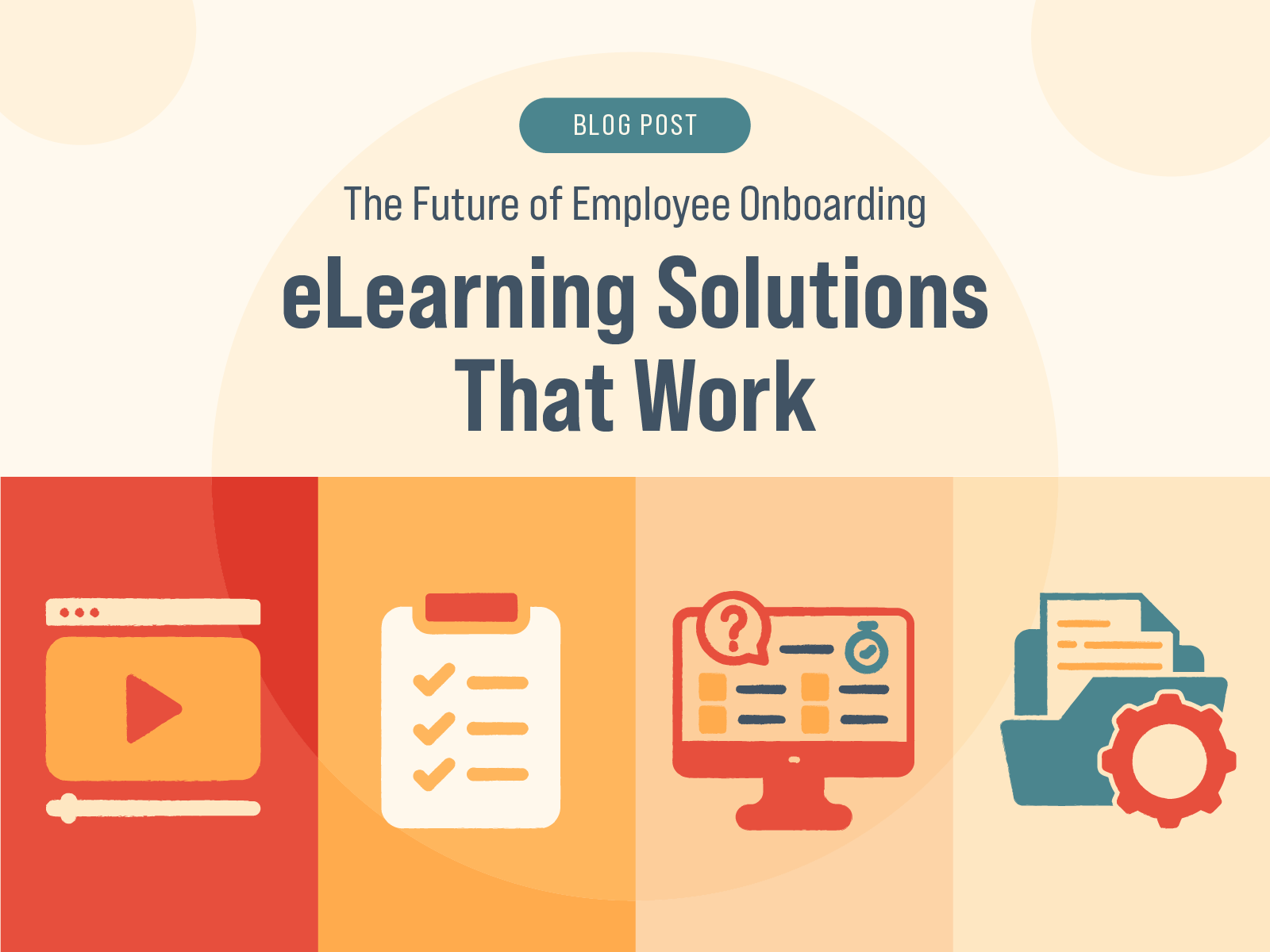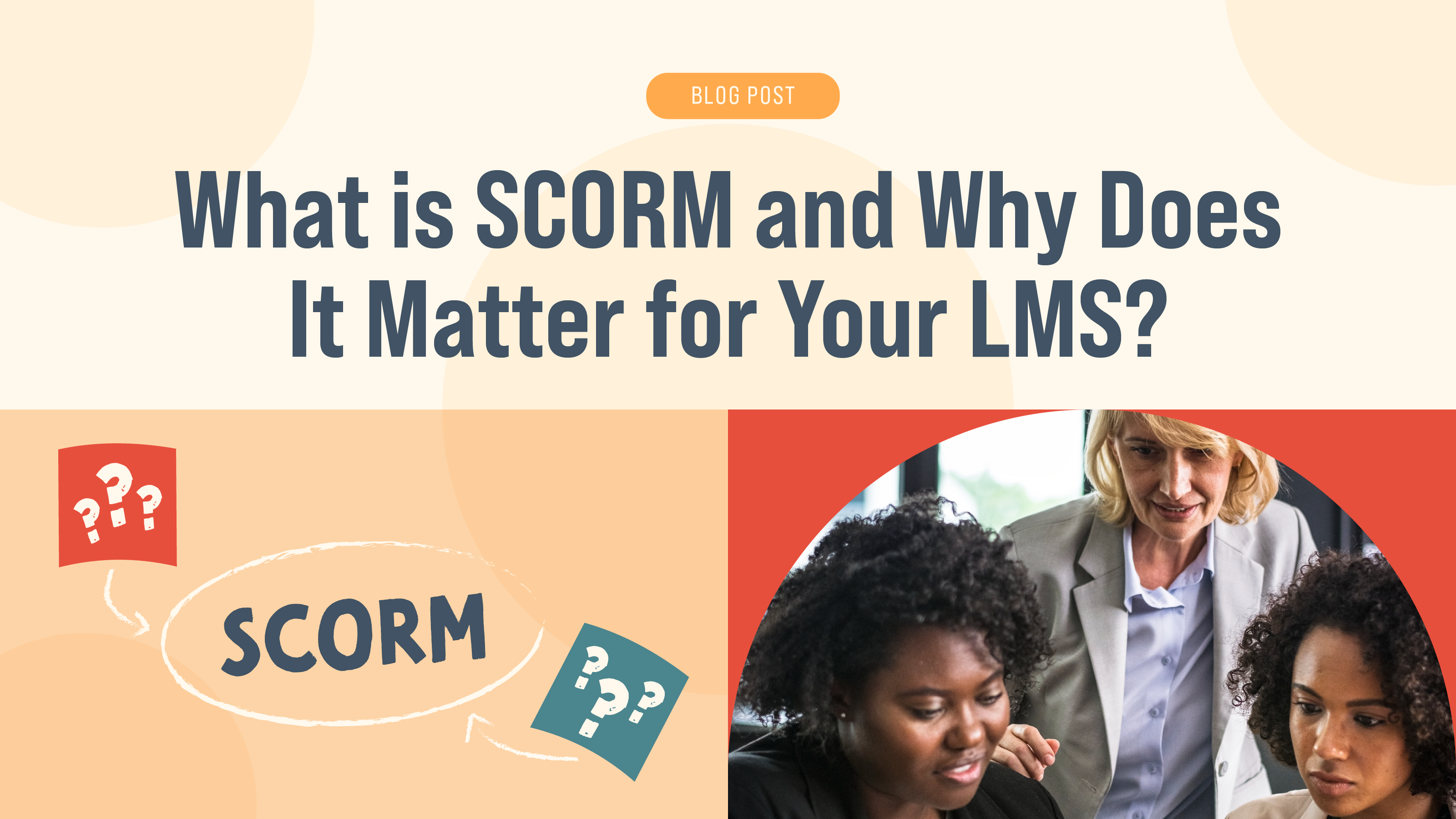eLearning Trends and Predictions: 2022 Forecast
The world as we know it continues to adjust to a new normal in these post-pandemic times. Companies across the world are rethinking how they should be running their business and continue to lean on advanced technology to stay productive.
In return, corporate eLearning courses trends have also changed. Here’s a peek into the eLearning market trends and forecast for next year.
eLearning Technology Trends in 2021-2022

You may be surprised to learn about some of the latest trends in eLearning. Here’s what you can expect as we head into 2022.
Big Data and Learning Analytics
The demand for eLearning has increased significantly over time, and companies can leverage this learning analytics data to curate better content for their consumers. Using this data, companies can also understand the path that each learner takes throughout the content. Are they following the steps as expected or are they navigating the course in an unexpected way? What areas of the course are tripping them up the most? These considerations are an excellent starting point in creating eLearning courses that are even more impactful.
Machine Learning and Artificial Intelligence
Access to Big Data makes it easy to pinpoint behavioral patterns and helps establish what learning styles provide greater adaptability for the learner. Big Data also helps determine which course aspects are the most motivating and which don’t produce strong results.
The application of machine learning and artificial intelligence also leads to aspects such as facial recognition, AI-based content, or learning algorithms based on user behavior. Think AI tutors that can provide personalized course content or skill gap technology that accurately determines what areas need improvement.
IoT and Wearables
Another eLearning future trend is the Internet of Things (IoT) which revolves around the connectivity between objects and how to control them remotely. IoT provides students with improved access to communication channels and learning materials while giving teachers the ability to track and measure progress in real-time. Automatically update your learners about their lessons, forum activities, or other essential information that will help them be successful. The IoT can also be used to analyze behavior to see which eLearning lessons were the most impactful and which need to be reworked.
When it comes to wearable devices, Google Glasses are a great example. They combine learning tools with augmented reality and virtual reality for a unique learning experience.
Chatbots
Question and answer (QA) systems can help answer your learners’ questions in a natural, engaging way. “Source” systems extract information from an image or text to answer a specific question. These systems are typically divided into two main categories: open-domain questions that don’t focus on a specific material or closed domain where questions have restraints. These QA systems, also referred to as chatbots, can help answer course-specific questions as they arise.
Content Trends of eLearning in 2021-2022

Some of the biggest trends in eLearning also revolve around the type of content present in each course.
Microlearning
Microlearning is one of the top eLearning industry trends as it revolves around content retention. Did you know that in 30 days, learners won’t remember 80% of what they learned? This is where microlearning comes into play as it delivers content into bite-sized chunks with the hopes of higher retention. Microlearning is especially popular in organizations that continuously change their operations and operate at a fast pace. Consider breaking courses into small, digestible sections that engage your audience and help them retain the information.
Gamification and Social Learning
Another new eLearning trend is gamification and social training. This trend brings a bit of playfulness to your course’s content and helps get learners excited about what they are learning about. Combining content with game-like elements such as leaderboards, scorecards, prizes, or other enticing elements instills a healthy level of competition and fun within your organization’s eLearning needs. Incorporating game-like elements can make seemingly dry content that much more engaging and help reduce employee turnover. As the workforce becomes more remote, instilling gamification and social learning can add a new layer of interactivity and excitement.
Video Training
It’s not surprising that employees will retain video-included presentations roughly 9% easier versus only looking at text on a screen. Put yourself in the shoes of a student, wouldn’t you prefer to watch something engaging versus only reading text? Consider adding video training to your eLearning content to illustrate topics such as onboarding, compliance training, company welcome videos, etc. According to Forrester, it only takes 1 minute of video training to equal the impact of reading 1.8 million written words. More and more companies will incorporate video into their eLearning courses in 2022 and beyond.
Live Training and Webinars
Live training and webinars are other new trends in eLearning. Just because your learners are in a virtual classroom doesn’t mean they can’t take advantage of live learning. There are many real-time collaboration tools and techniques that can teach your audience in a precise way and eliminate their doubts on the spot. Regardless of what your eLearning budget is, consider live training and webinars as they are an inexpensive way to have a huge impact on your company or business’ efforts.
New Ways of Learning
New ways of learning is another emerging eLearning trend that consists of concepts such as:
- Self-directed learning: Many students prefer to go through eLearning courses at their own pace without the guidance of an instructor. They are able to learn and retain information as quickly or slowly as they want to.
- Blended learning: This refers to a mixture of both instructor and digital content, combining two familiar learning aspects to create an enjoyable learning experience. Blended learning also helps the learner grasp the material on their own.
- Adaptive learning: This revolves around personalization in the learning process that results from algorithms, competency mapping, and assessments.
Personalization
Appeal to your audience by offering personalized learning. By personalizing your training, you can also learn more about learning styles and preferences, using data to provide additional course customizations in the future. As a result, each student will learn more information that is retained better than traditional learning methods.
How Allegro Media Design Can Help
Allegro Media Design custom eLearning courses are always reflective of the latest eLearning industry trends. Our experts are on standby ready to help create custom courses that will have a genuine impact on your team! Contact us directly to get started on your eLearning course!
More Articles


Gamification in eLearning: Why It Works and How to Implement It

The Future of Employee Onboarding: eLearning Solutions That Work

What is SCORM and What Does it Matter

Accessibility in eLearning: Why It’s Essential and How to Achieve It

Microlearning: Bite-Sized Training for Big Results

Soft Skills Training Through eLearning: Building Better Leaders

How to Write Learning Objectives for eLearning Courses

When to Outsource Your eLearning Development (and How to Choose the Right Partner)

Employee Engagement in 2025: How eLearning Can Help

Training for a Multigenerational Workforce: Meeting Everyone’s Needs

The Future of eLearning: 4 Trends Shaping the Industry

How To Find the Right eLearning Developer

What Makes eLearning Effective?

Transform Your eLearning with the Magic of Animation

How to Use Audio to Enhance eLearning

Boost Learning Efficiency with Microlearning

Give Your Dated eLearning a Fresh Facelift

The Process of eLearning Part 5: The Implementation Phase

The Process of eLearning Part 4: The Development Phase

The Process of eLearning Part 3: The Design Phase

The Process of eLearning Part 2: The Analysis Phase

The Process of eLearning Part 1

Empower Your Workforce with Self-Paced Training

Elevate Your Training with Exceptional Visual Design

Taking the Confusion Out of SCORM

Embrace Efficiency: The Power of Outsourcing Your eLearning Production

Mastering eLearning: Elevating Corporate Training Through Scenario-Based Learning

Converting ILT to vILT: Embrace the Virtual Shift

Spice Up Your Boring Corporate Training With Animated Videos Copy

From Concept to Clicks: The Crucial Role of eLearning Developers

Lost in Translation: Mastering Multilingual eLearning

Training Crossroads: ILT or eLearning – What's Your Strategy?

How to Transform Boring Compliance Training

Last-Minute Crunch? Allegro Media Delivers Rapid eLearning Solutions Just-In-Time!

The Art of Chunking (or How to Eat a Whale)

Zen & The Art of eLearning Maintenance: Finding Harmony with Allegro Media Design

How to leverage ChatGPT for eLearning Applications

What Should I Look for When Hiring an eLearning Vendor?

Unveiling the Future of eLearning: Trends to Watch in 2024

Subject Matter Experts: Be Proud! Allegro loves you just how you are!

What in the World is an LMS?

Enhancing eLearning Engagement: The Power of Scenario-Based Interaction with Stylized 3D Motion Images

Enhancing eLearning with DALL-e: Adding Visual Reinforcement for Engaging Corporate Training

Choosing the Right Authoring Tool for Your eLearning Course

High Quality Audio is ESSENTIAL in Modern eLearning

What in the World is SCORM?

A Complete Guide to Leadership Training and Development

Benefits of Customer Service eLearning Training

14 Tips To Effectively Use Audio for eLearning Courses

10 Instructional Design Tips for Effective eLearning

Why You Should Use eLearning For Product Training

Benefits of Voice Overs for Your Business

How to Create Great eLearning Content: 9 Tips

Video Marketing for Business: 10 Benefits of Promotional Videos

Gamification in the Workplace: Why and How to Use It

5 Best Practices for Training Remote Employees

How to Avoid eLearning Burnout and Fatigue

What Is Customer eLearning Training and Why Do You Need it?

8 eLearning Sales Training Best Practices: Tips & Use Cases

How to Effectively Use Videos in eLearning

Best Practices for Remote Employees Onboarding with eLearning

Why You Should Invest in Corporate eLearning?

How Can eLearning Reduce Employee Burnout?

How to Motivate Employees to Participate in eLearning Training: 9 Tips

7 Reasons to Outsource Your eLearning Course Development
%20to%20Virtual%20Instructor-Led%20Training%20(VILT).jpg)
How to Convert Instructor-Led Training (ILT) to Virtual Instructor-Led Training (VILT)

12 Best Tips on How to Improve Employee Training with Gamification in 2021-2022

What Is Compliance Training and Why Is It Important for Your Business?
%20vs.%20eLearning.jpg)
Instructor-Led Training (ILT) vs. eLearning: Which Should I Choose?

The Difference Between An Instructional Designer And An eLearning Developer
















